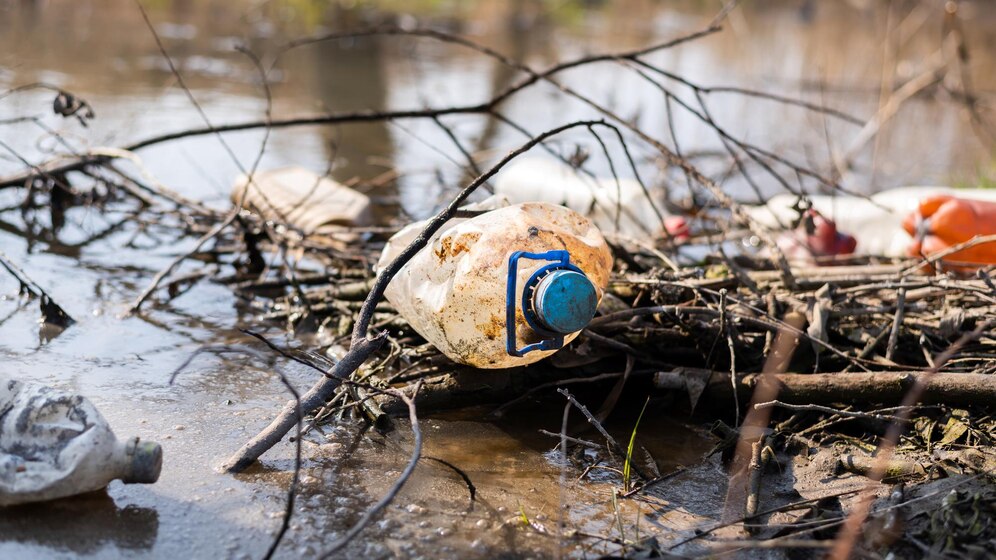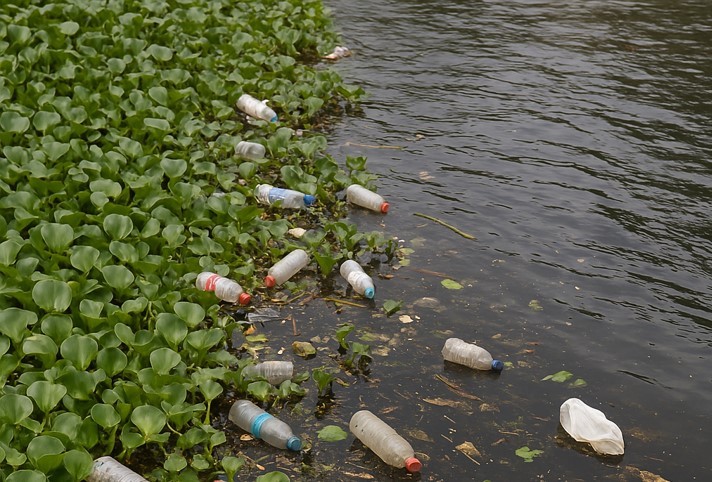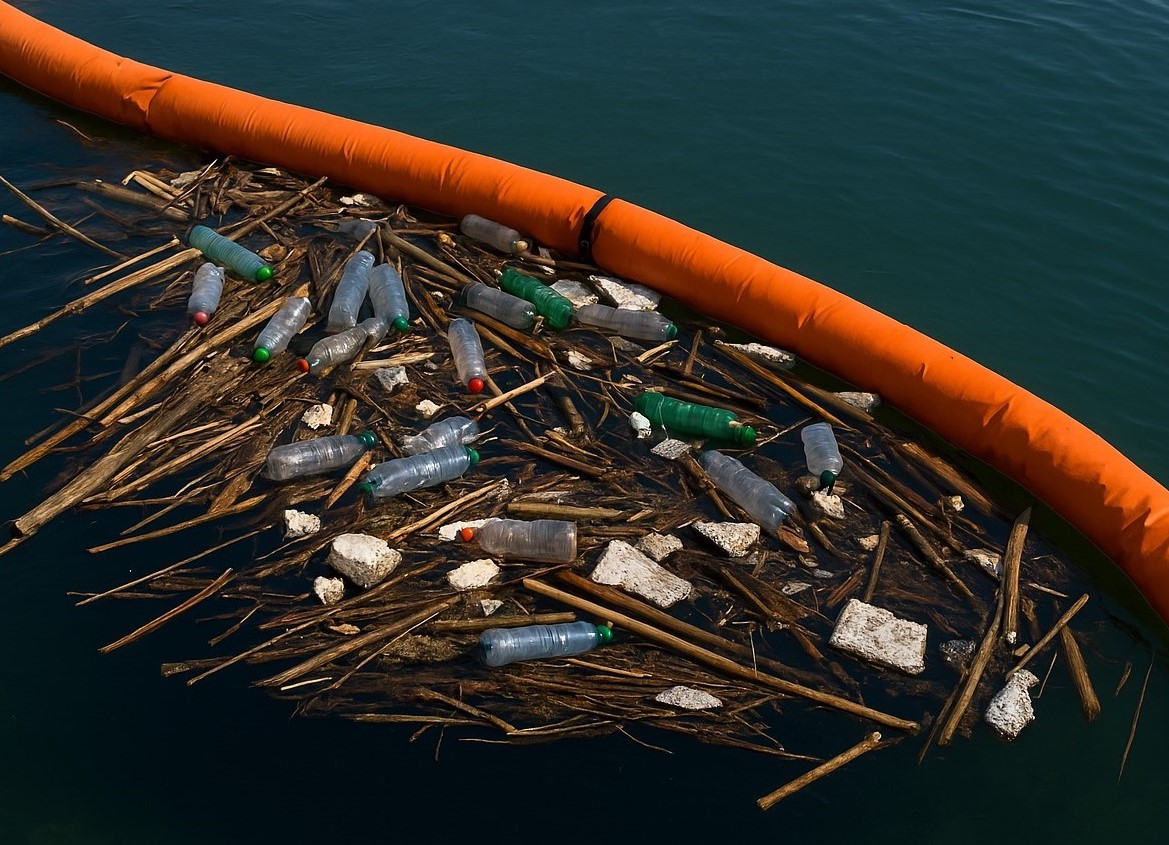Importance of Trash Skimmers in Urban Water Management

Trash is a serious threat to the ecosystem of water bodies and must be dealt with holistically. It impacts the environment, economy, health, safety, and culture around the contaminated water body. Contaminants like plastic degrade very slowly, and the quantity continuously increases leading to floating trash on shore and in the water bodies. Similarly, untreated or partially treated wastewater when discharged into the receiving channels leads to eutrophication – the growth of aquatic weed, a dangerous invasion. Trash such as plastic, aquatic weed, paper, cloth, etc. that float on water can be removed with the help of a trash skimmer. Trash skimmers have been instrumental in reviving several water bodies across the world.
What is a Trash Skimmer?
A trash skimmer mechanically recovers floating debris from water bodies such as harbors, waterways, rivers, lakes, and oceans. Floating debris includes plastic, branches, logs, aquatic weeds and litter. Along with floating debris, the trash skimmer also recovers oil on a small scale.
A trash skimmer is a vessel designed to pick up floating debris, store the debris on the vessel, and discharge the debris from the storage area.
A typical trash skimmer has one or more hydraulically powered conveyors, positioned between the pontoons of twin hull vessels. The main conveyor has a pair of wings or jaws. The main conveyor extends at the front end into the water to arrest the floating debris. The conveyor carries the debris to the storage area. Once the debris storage is full, the boat is taken to discharge the debris onto a barge or a truck. The main conveyor height can be adjusted within a set range to efficiently recover floating debris.
An operator position or control deck is located at an elevated position to control the motion and orientation of conveyors and control the propulsion and steering of the vessel.
The trash skimmer can be categorized into two types – static and dynamic. The static trash skimmer is positioned at a certain location to collect the trash. The static skimmer does not move, it is stationary. Whereas, a dynamic trash skimmer can move in different directions to collect trash. These trash skimmers can be mounted onto a trailer for transfer from one location to another.
Why Trash Skimmers for Urban Waterfronts?
Urban areas are densely populated compared to rural areas. In urban areas, everyone shares the same relative space, air, and water, therefore environmental impacts are concentrated in smaller areas, including waterways.
Urban Lakes or Water Bodies are very important features in the landscape. They are vital in hydrological severe conditions like drought and floods, they influence the micro-climate as well as enhance the aesthetic beauty of the landscape, and offer various recreational opportunities
Urban waters take on large amounts of pollution from industries, commercial and domestic wastewater, trash, and polluted stormwater runoff from urban landscapes resulting in floating debris, eutrophication, and changes in the properties of the water body such as temperature, compositions, etc. Studies suggest that lakes can reduce the content of various pollutants in the atmosphere in several ways and help mitigate air pollution.
Why is a Trash Skimmer Important?
- • A trash skimmer eliminates floating pollutants, which is an important aspect of maintaining and reviving a water body.
- • It is environment-friendly. A trash skimmer is a mechanical skimmer that preserves marine biodiversity and does not use any chemicals or change the composition of the water for the long term.
- • A static trash skimmer can be positioned at a certain location to recover floating debris flowing along the current.
- • A dynamic trash skimmer can cover a large affected area and requires minimal manpower.
- • Trash skimmers can be equipped to harvest aquatic weeds.
Urbanization leads to growth in population subsequently leading to an increase in pollution. The growth directly and indirectly results in affecting the water bodies in the urban areas. In many cases, the urban water body dries up or is beyond restoration. Every polluted or dying water body affects the urban area in more than one way such as adversely affecting socio-economic factors, changes in micro-climate, landscape, etc. Water bodies play a multi-layered role in urban areas – mitigate floods, water supply, landscape, recreation, tourism, and irrigation, and are used for religious ceremonies. Moreover, in urban areas, the water bodies are scarce compared to the population it caters to. Hence, it is very important to maintain and revive water bodies in urban areas.
A trash skimmer plays an instrumental role in reviving and maintaining water bodies. It efficiently mitigates debris; harvests aquatic weeds and recovers free-floating oils. It is environment-friendly and easy to transport, deploy and operate. A trash skimmer can be solar-operated and remotely controlled. The working, features and advantages of a trash skimmer make it a vital part of a holistic approach to restoring urban water bodies.
The trash skimmer has proved to protect and enhance city waterfronts and infrastructure across the world, making it an integral part of urban water management.
Frequently Asked Questions
Q.1 In which industries are rotary screens commonly utilized?
A. Rotary screens are commonly utilized in industries such as mining, agriculture, recycling, and wastewater treatment. They are used for separating materials, screening ores, and filtering liquids.
Q.2 How does the design of a mechanical bar screen affect its efficiency?
A. The design of a mechanical bar screen affects its efficiency by influencing factors like airflow, ease of maintenance, and the effectiveness of filtering or separation processes. An optimized design ensures better performance and energy use.





